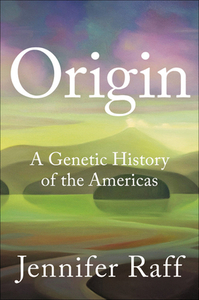Take a photo of a barcode or cover
Repetitive. Difficult to follow because it keeps looping back on itself and fails to describe the peoples who populated the American continents with distinction/clarity for a semi-distracted non-expert to follow.
challenging
informative
medium-paced
hopeful
informative
reflective
slow-paced
informative
reflective
fast-paced
challenging
informative
slow-paced
informative
reflective
medium-paced
informative
medium-paced
informative
reflective
slow-paced
challenging
informative
inspiring
reflective
medium-paced
This is the new science writing on North American prehistory, apparently–unapologetically rooted in “Western” science (Raff dislikes but uses the term, as do I), but explicit about those roots, and sprouting a gajillion footnotes. The subtitle suggests this is “A Genetic History of the Americas”, but that’s really only a few chapters towards the end. The rest of the book is all the context necessary to understand the genetic history of the Americas, including a brief history of the discipline plus a lot of archaeology. I really appreciate the legwork Raff did here to lay out what little science knows about how people arrived in the Western Hemisphere, what genetics can and can’t tell you, and why people don’t always want to be part of that research despite its incredible potential. As an archaeologist, this book underlines for me how incomplete archaeology is, how much better the story is when drawn from many lines of evidence. The book has to go back to the library but it is still full of sticky notes.
There is some lovely writing--clear, methodical, and slightly annoyed, as scientists tend to be. Especially when they find themselves obliged to put the kibosh on paper-thin theories that keep rearing their bizarre heads in pop culture, like the Salutrean Hypothesis or Clovis First. I realize the evidence from these long-ago periods is patchy, given to various possible interpretations, but at some point I think having to rehash the unlikely ones is holding us back from more interesting conversations.
I always wonder why there is so much emphasis on nailing down the details of the very first migration into the Americas when what happened shortly afterward was so interesting. It’s nice to hear Raff’s acknowledgement:
“Although there is a disproportionate amount of research attention to questions regarding the origins of Native Americans and the initial peopling of the Americas, Indigenous histories should not be viewed as limited to the distant past. There are many other important questions to be asked about the thousands of years that followed the initial peopling: how populations settled into their lands; how people adapted, changed, and maintained traditions; how people traveled and encountered each other; how tribes maintained peaceful relations or engaged in conflict.”
And this thought I’ve had too, nicely phrased even from the person who titled her book Origin: “It’s difficult to know where (or when) to begin a genetic history. Genetics complicate a straightforward narrative, and any place you may pick as the ‘origin’ of a population will inevitably be arbitrary.” When it’s a matter of people moving, shifting, changing their homes and relatedness to each other, there will never exactly be a beginning. It’s just one long chain of relationships.
“Although there is a disproportionate amount of research attention to questions regarding the origins of Native Americans and the initial peopling of the Americas, Indigenous histories should not be viewed as limited to the distant past. There are many other important questions to be asked about the thousands of years that followed the initial peopling: how populations settled into their lands; how people adapted, changed, and maintained traditions; how people traveled and encountered each other; how tribes maintained peaceful relations or engaged in conflict.”
And this thought I’ve had too, nicely phrased even from the person who titled her book Origin: “It’s difficult to know where (or when) to begin a genetic history. Genetics complicate a straightforward narrative, and any place you may pick as the ‘origin’ of a population will inevitably be arbitrary.” When it’s a matter of people moving, shifting, changing their homes and relatedness to each other, there will never exactly be a beginning. It’s just one long chain of relationships.



